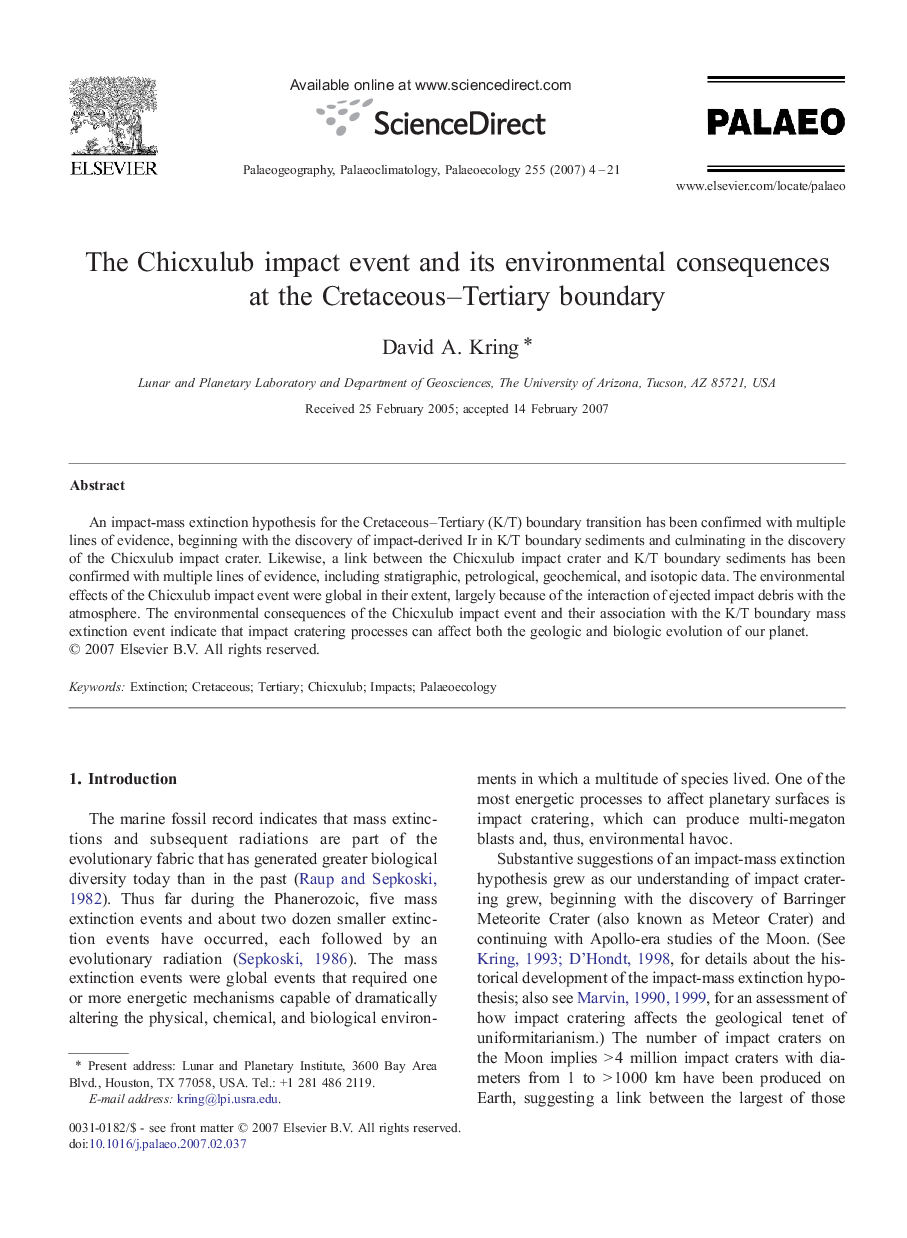| Article ID | Journal | Published Year | Pages | File Type |
|---|---|---|---|---|
| 4468675 | Palaeogeography, Palaeoclimatology, Palaeoecology | 2007 | 18 Pages |
An impact-mass extinction hypothesis for the Cretaceous–Tertiary (K/T) boundary transition has been confirmed with multiple lines of evidence, beginning with the discovery of impact-derived Ir in K/T boundary sediments and culminating in the discovery of the Chicxulub impact crater. Likewise, a link between the Chicxulub impact crater and K/T boundary sediments has been confirmed with multiple lines of evidence, including stratigraphic, petrological, geochemical, and isotopic data. The environmental effects of the Chicxulub impact event were global in their extent, largely because of the interaction of ejected impact debris with the atmosphere. The environmental consequences of the Chicxulub impact event and their association with the K/T boundary mass extinction event indicate that impact cratering processes can affect both the geologic and biologic evolution of our planet.
